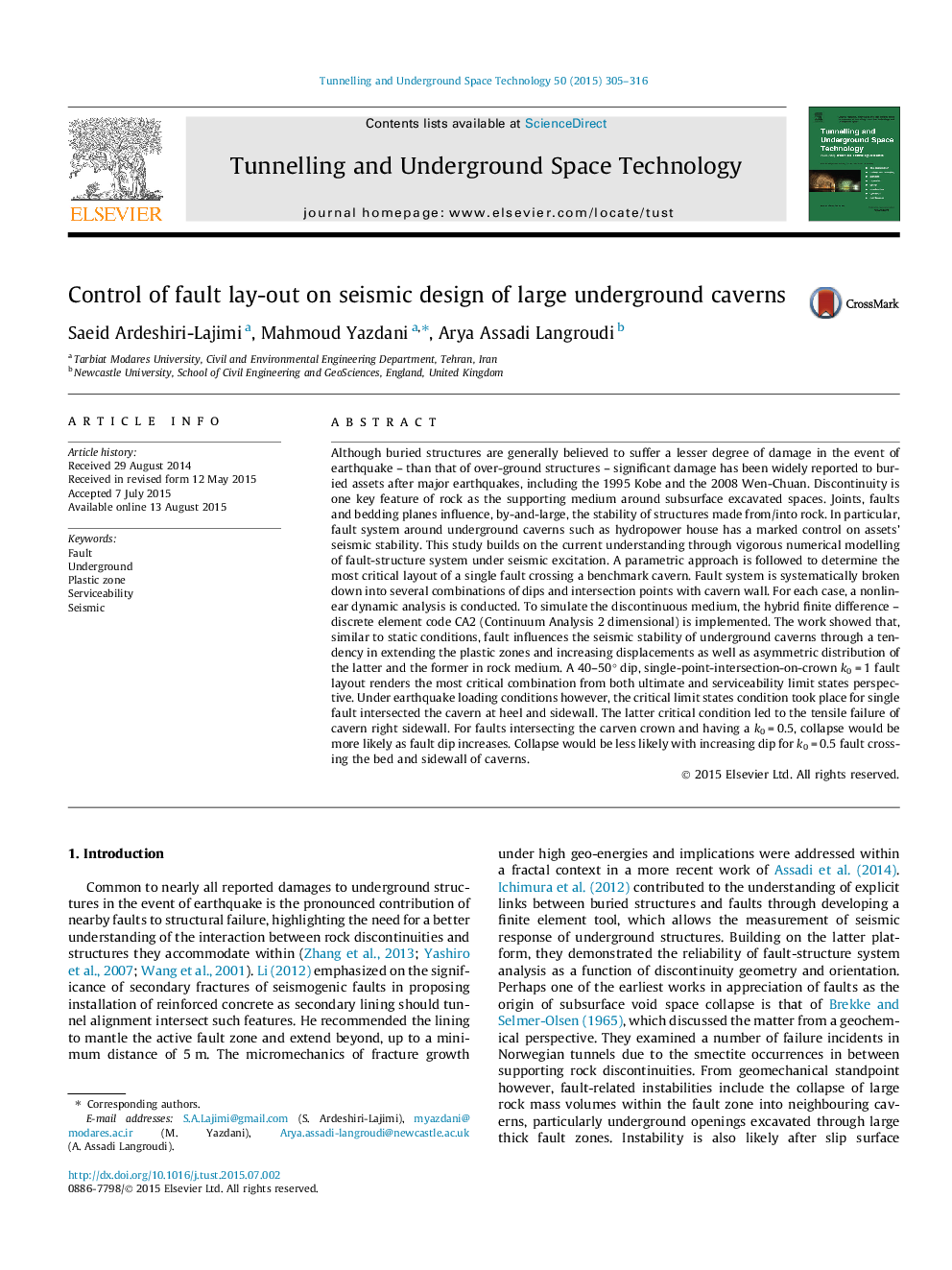| کد مقاله | کد نشریه | سال انتشار | مقاله انگلیسی | نسخه تمام متن |
|---|---|---|---|---|
| 6783942 | 533336 | 2015 | 12 صفحه PDF | دانلود رایگان |
عنوان انگلیسی مقاله ISI
Control of fault lay-out on seismic design of large underground caverns
ترجمه فارسی عنوان
کنترل خطا در طراحی لرزه ای غارهای بزرگ زیرزمینی
دانلود مقاله + سفارش ترجمه
دانلود مقاله ISI انگلیسی
رایگان برای ایرانیان
کلمات کلیدی
عیب، زیرزمینی، منطقه پلاستیکی، قابلیت اطمینان، لرزه ای،
موضوعات مرتبط
مهندسی و علوم پایه
علوم زمین و سیارات
مهندسی ژئوتکنیک و زمین شناسی مهندسی
چکیده انگلیسی
Although buried structures are generally believed to suffer a lesser degree of damage in the event of earthquake - than that of over-ground structures - significant damage has been widely reported to buried assets after major earthquakes, including the 1995 Kobe and the 2008 Wen-Chuan. Discontinuity is one key feature of rock as the supporting medium around subsurface excavated spaces. Joints, faults and bedding planes influence, by-and-large, the stability of structures made from/into rock. In particular, fault system around underground caverns such as hydropower house has a marked control on assets' seismic stability. This study builds on the current understanding through vigorous numerical modelling of fault-structure system under seismic excitation. A parametric approach is followed to determine the most critical layout of a single fault crossing a benchmark cavern. Fault system is systematically broken down into several combinations of dips and intersection points with cavern wall. For each case, a nonlinear dynamic analysis is conducted. To simulate the discontinuous medium, the hybrid finite difference - discrete element code CA2 (Continuum Analysis 2 dimensional) is implemented. The work showed that, similar to static conditions, fault influences the seismic stability of underground caverns through a tendency in extending the plastic zones and increasing displacements as well as asymmetric distribution of the latter and the former in rock medium. A 40-50° dip, single-point-intersection-on-crown k0 = 1 fault layout renders the most critical combination from both ultimate and serviceability limit states perspective. Under earthquake loading conditions however, the critical limit states condition took place for single fault intersected the cavern at heel and sidewall. The latter critical condition led to the tensile failure of cavern right sidewall. For faults intersecting the carven crown and having a k0 = 0.5, collapse would be more likely as fault dip increases. Collapse would be less likely with increasing dip for k0 = 0.5 fault crossing the bed and sidewall of caverns.
ناشر
Database: Elsevier - ScienceDirect (ساینس دایرکت)
Journal: Tunnelling and Underground Space Technology - Volume 50, August 2015, Pages 305-316
Journal: Tunnelling and Underground Space Technology - Volume 50, August 2015, Pages 305-316
نویسندگان
Saeid Ardeshiri-Lajimi, Mahmoud Yazdani, Arya Assadi Langroudi,
